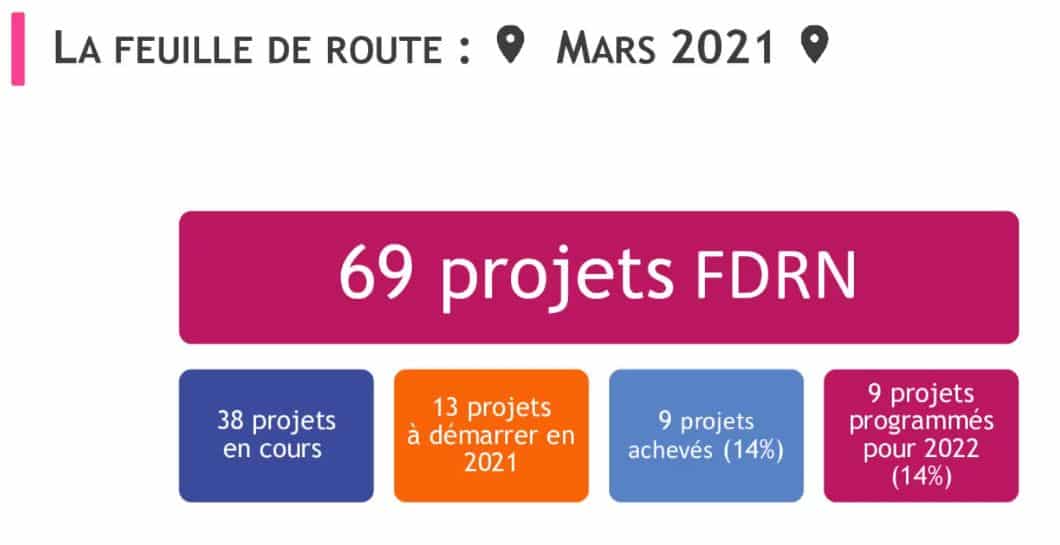Digital transformation of the Ille & Vilaine local authority: time for projects!
Digital transformation of local authorities: digital for citizens and employees
Whether the digital transformation of local authorities is chosen or imposed by the health situation, it is no longer an option. And public services are well aware of the stakes: making them more accessible to citizens, converting their tremendous potential for their agents and improving the overall efficiency of their public policies.
This article provides a complete overview of Ille et Vilaine's response to challenges , with highlights from the department's transformation delegation.
How can we respond to the call from elected representatives and the Director of Services to move from a digital environment that has been subjected to change to one that is chosen and controlled, in line with the values of the local authority? How can we meet citizens' expectations for simpler administrative procedures? How can we involve all our employees, between operational contribution and steering the digital transformation? How was the roadmap drawn up? How is the department piloting the portfolio of projects that embody its digital and strategic ambitions?
Digital transformation in local authorities: feedback from the Ille et Vilaine department
The Département d'Ille-et-Vilaine has adopted an ambitious digital strategy. The aim is to transform the department's administration and adapt its public policies to permanently integrate challenges digital technologies. In this way, the Département d'Ille-et-Vilaine aims to offer Bretilliens a public service tailored to their needs, to contribute to balanced regional development, and to make the local authority an innovative, collaborative and efficient administration that is concerned with the quality of working life of its employees.
Realizing ambition: a multi-year digital roadmap, with dedicated resources. Structuring the roadmap to meet the challenges of unprecedented scale, with the first three strategic axes :
- citizens (population 1.076 million in 2019)
- agents (4,200)
- internal management (1.172 billion euros to serve the people of Brittany in 2021)
The actors and witnesses of the department's Digital Transformation :
- General Delegate for Transformation - Mona Izabelle
- Digital Transformation Delegate - Dominique Kergosien
- Digital Systems Manager - Benoît Moraillon
- Project Office Manager - Lisa Garcia
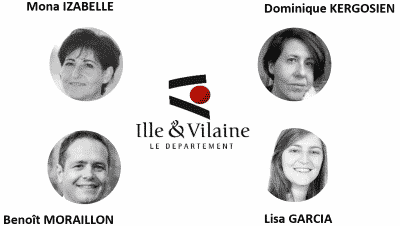
SUMMARY - In this article you will find the highlights of this webinar:
- A look back at Ille et Vilaine's digital transformation
- From ambition to realization of the roadmap: what resources can be deployed?
- The first achievements of the Ille et Vilaine digital roadmap
- The roadmap's next challenges
- Best of questions and answers
1. A look back at Ille et Vilaine's digital transformation
The process of defining the digital roadmap was launched at the end of 2018 and ran throughout 2019. All forty departments, the general management committee and elected representatives.
Ille et Vilaine department's digital roadmap
- September 2018: Commissioned by the DGS and elected representatives. Willingness to move from a suffered digital to a chosen and controlled digital, aligned with the values of the community.
- A year of work and co-development of digital transformation scenarios with all divisions and business departments
- 55 processes with transformation potential analyzed and prioritized with the divisions
- 22 major digital projects spearhead the approach
- Identification of 3 transformation scenarios: Proposal and adoption of "Scenario B - outsourcing".
- Vote on the Department's digital roadmap in December 2019
"First of all, we identified the processes most likely to bring about transformation. We mapped 55 processes, which we studied using a value analysis method. This analysis enabled us to determine an initial prioritization and the structuring projects to be launched. These initial results were submitted to the steering committees and elected representatives for approval. We then drew up a 3-year roadmap, a costed program from the point of view of both project management and contracting. We worked on different implementation scenarios. As the workload was greater than our capacity to carry it out, we decided to outsource part of the project in order to achieve our digital ambitions. The local authority has voted a dedicated budget of 15 million euros to support the digital roadmap.
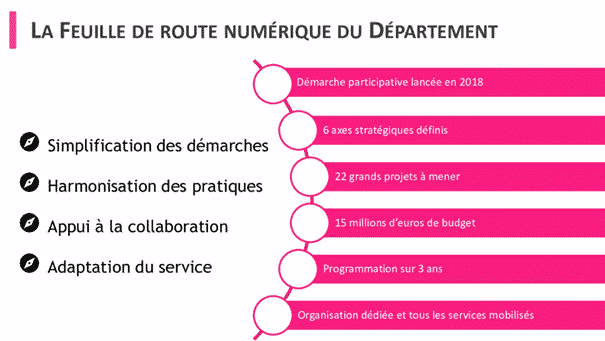
6 strategic objectives are supported by the digital transformation roadmap
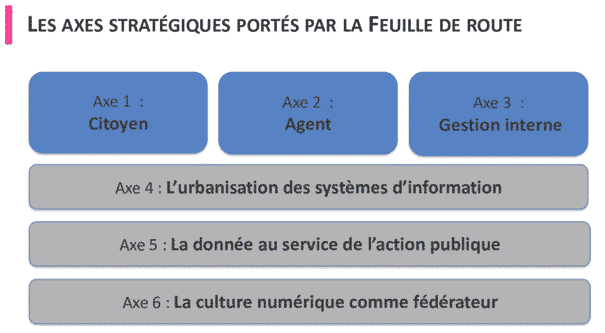
To (re)discover the development of the digital roadmap, we invite you to consult the highlights of the first testimony from the Ille et Vilaine department.
2. From ambition to implementation of the roadmap: what resources can be deployed?
Setting up a "production apparatus
The year 2020 focused on setting up a production apparatus and on the first priority projects. The creation of this "production platform" is based on three pillars:
- implementation of "scenario B" for outsourcing, with consultations on the project management assistance and project management aspects.
- application of the platform's technical strategy
- setting up a project office - a key body in the governance of the roadmap
This production machine represents a major paradigm shift at DSN - Direction des Services Numériques. It represents a break with the information systems master plan. In particular, with the asserted dissociation of what comes under project management, project ownership and project ownership assistance.
In concrete terms, this paradigm shift translates into a new ratio in costing:
For one day of project management, we expect 1 day of project management and 0.5 day of project management assistance.
A principle adopted at the time of the roadmap: outsourcing of production and support services
The costing of the Feuille de Route Numérique (Digital Roadmap) showed that the department's capacity was below the ambitious requirements. The solution, scenario B, was to acquire external resources. Part of 2020 therefore focused on this outsourcing. We therefore worked with new public procurement contracts, new framework agreements, to provide us with the appropriate outsourced resources to meet these new ambitions.
Two contracts awarded in 2021:
- Multi-year contract for project management assistance : 6 lots to develop digital solutions (development, testing, web portals, data) or support IT project management
- Multi-year contract for project management assistance : project management, change management, studies, UX design, etc.
Technical strategy: aiming to take back control of technology
For years, we were stuck in a "one need = one market = one software package" pattern. This led to a lot of technical debt, vendor lock-in, agility problems, and frustration for project managers, who were often locked into historical patterns that didn't keep pace with technological developments. We've moved to a "platform" logic. This enables us to carry out "low code" development, producing 80% of services by parameterization and in autonomy with project management assistance, and 20% of code. We use this approach for citizen relationship management, the digital workplace (agent portal) and business applications. We're back in control of our developments, more responsive and more agile.
Platforms versus applications in Silos :
This principle is very different from a publisher's product, which addresses a precise business need without any capacity for evolution by the community and in an autonomous way.
This principle is also very different from a software solution specifically developed in-house, which systematically requires starting from scratch with a development environment, a server, a database and functional, technical and security administration functions, etc...
With a platform, we pool the basic technical and functional layers to concentrate on the production of value-added services.
A new organization: the creation of a project office
The Feuille de Route Numérique involves 69 projects. To ensure overall management, the department has set up a Project Office, reporting directly to the Transformation General Management. It provides an interface between project owners, project managers, project teams and governance bodies. It ensures the security of projects through precise monitoring of workloads and contracts, arbitration of new requests, and steering through project committees and roadmaps.
The tools used were the project portfolio management software Project Monitor. This is essential, because we need to be able to objectify workloads and costs, and to be able to schedule projects when new needs arise. All of this must be in line with a workload plan that can be supported by the teams and the project management team. Digital governance has been set up at the highest level, with a shared acculturation strategy.
The roles of the project office revolve around steering the digital roadmap:
- Centralize and arbitrate requests
One of the key points is to be the point of entry for all new needs and requests related to digital within the department. Any new need impacts on existing programming, allocated resources and possibly the budget. It's important to have this arbitration at Monitoring Committee level. All new requests must be taken into account by deprioritizing projects already approved.
- Leading monitoring committees
The second role is to lead the governing bodies around the roadmap. This monitoring committee steers the arbitration of requests, resources and budgets.
- Monitoring project life and capacity to deliver
Monitor resources allocated to the project, both internal and external.
- Guarantee and support the implementation of project mode
Build common frames of reference for the project mode, guarantee that the project mode is in place with good cross-functionality, and help with framing.
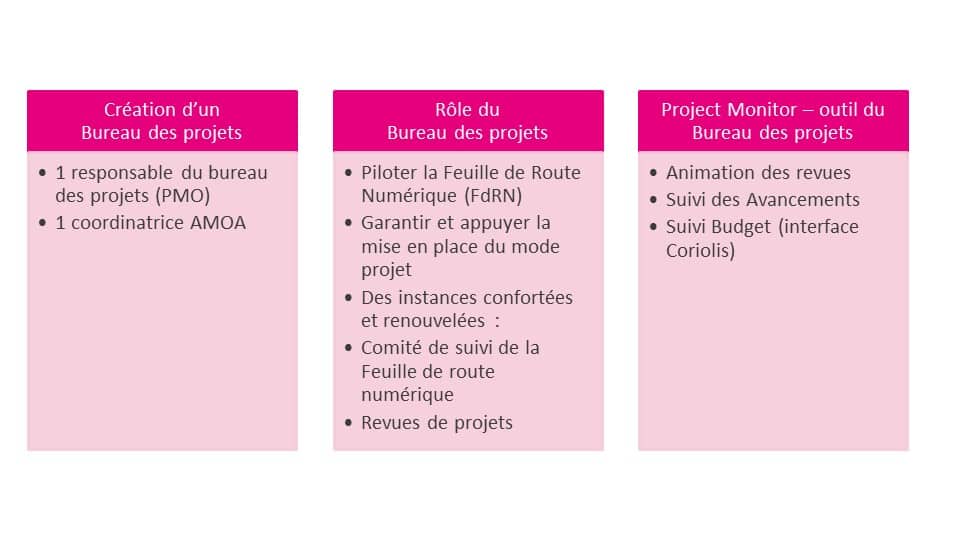
Focus on Roadmap Comitology
Implementing a digital ambition has meant readjusting governance. Governance is of paramount importance to the Ille et Vilaine department. It is supported at the highest level by the elected representatives and the General Management.
We have set up a digital roadmap monitoring committee comprising the General Management team, cross-functional directors and divisional general secretaries, who meet quarterly to make arbitration decisions. The Project Office prepares, consolidates, summarizes and liaises with all project portfolios. It provides an overall vision through project reviews.
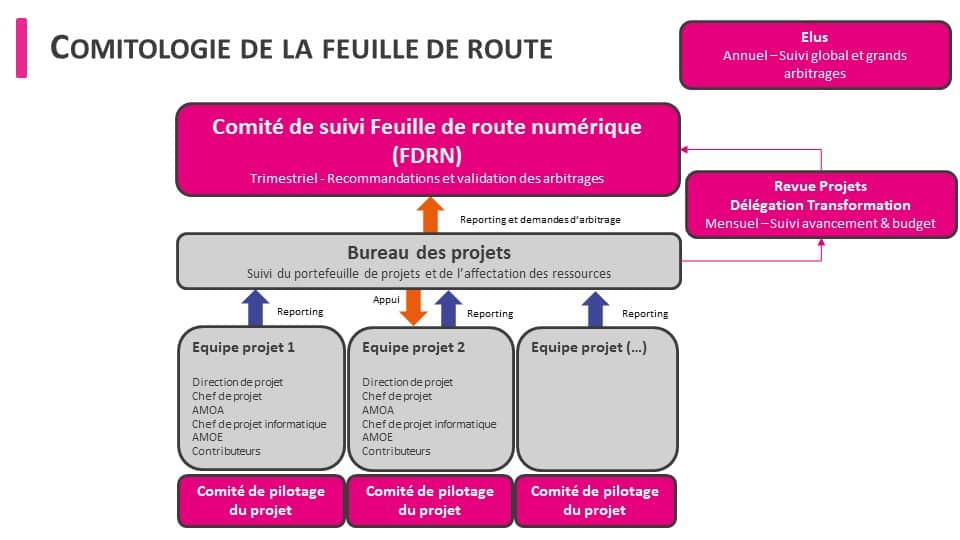
Project Monitorproject portfolio management software to support the digital transformation of local authorities
Project Monitor is a Project & Portfolio Management software designed to meet the needs of Digital Transformation units, CIO, PMO, CIO and project design offices. Discover a simple, online PPM tool, enabling you to plan, organize and manage the work of your teams from A to Z. Benefit from a wide range of functions in a single collaborative tool: dashboards, Gantt, Kanban, time tracking, resource load planning and budget tracking.
The Ille et Vilaine project office uses the following functionalities in particular:
- Dashboards
- Resource tracking
- Leading project reviews
- Progress monitoring
- Budget tracking interfaced with the Coriolis financial system
Leaders among public institutions, we already support over 50 local authorities.
3. The first achievements of the Ille et Vilaine digital roadmap
Panel of projects completed in 2020
The health context has redistributed priorities and brought digital technology to the fore. 2020 has proved to be a year of acceleration for digital technology, with the deployment of mobile equipment/videoconferencing tools and the establishment of technical foundations to improve connectivity within departments.
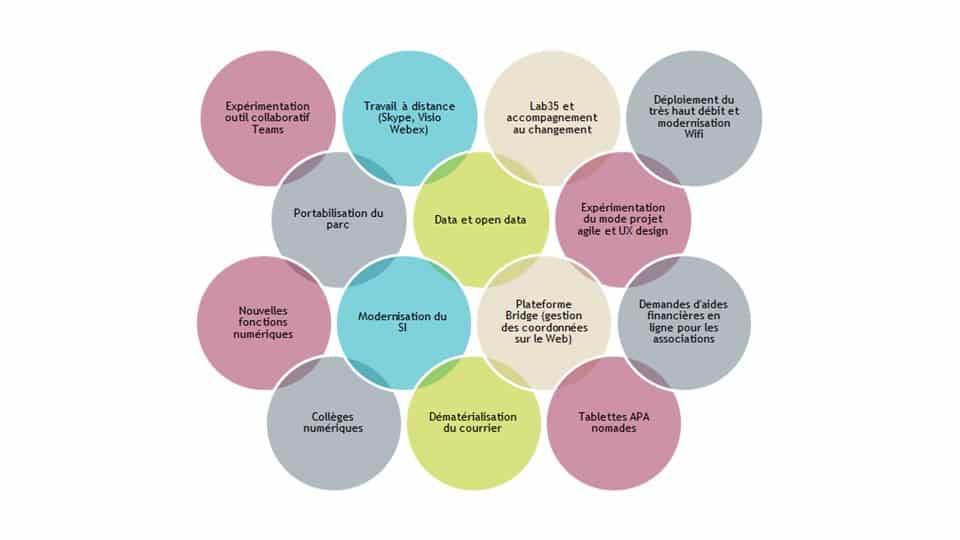
60 tablets have been distributed, enabling direct interfacing with field teams
Géronto tablets are a 100% mobile device designed for gerontology social workers and nurses.
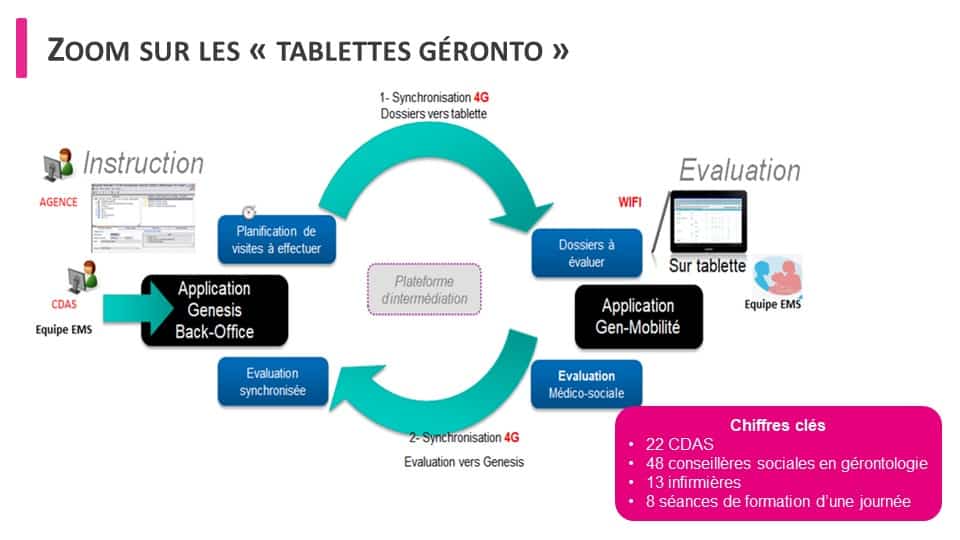
2021, digital acceleration continues in line with the Project Office
In 2021, we recently set up an open data platform, the object of nearly 15 months' work. We currently have around 30 projects running simultaneously. Ongoing projects include topics such as online appointment booking tools, with the digital counter component for users, but also behind the scenes, the overhaul and optimization of business processes. It's a 360° project.
4. The roadmap's next challenges
- Integrate new objectives and practices (agile mode)
We need to consolidate what we have already put in place, and adjust our strategy by integrating aspects that have not yet been clearly identified, such as digital responsibility.
- Consolidate the operational implementation of the new organization and governance
We now need to show that we are capable of producing services faster and more easily. And gradually take our technological destiny into our own hands, by limiting our adherence to the software package publisher model.
- Optimization of roadmap monitoring "tools
We'd like to take a closer look at dashboards for monitoring projects, and come up with an approach that measures the benefits of this project method.
- The opportunity of the national recovery plan
In the context of the national recovery plan, with the envelope dedicated to digital transformation, we have an opportunity to apply for funding and accelerate certain projects that are emblematic for us. The French government has allocated 88 million euros from the "France Relance" plan to support the definition and implementation of digital transformation projects for local authorities in France. The procedures for using these funds were devised in consultation with associations of elected representatives.
Future challenges: 4 Emblematic Projects
- Online services and multi-channel reception: The idea is to develop the online services platform and multi-channel reception to facilitate the processing of user requests.
- Data and business intelligence
- The agent portal and its digital work environment
- Agent digital inclusion: More than 150 different professions with varying degrees of appropriation of digital tools. The human resources department will join the digital roadmap to implement skills upgrading for all employees.
5. Best Of questions and answers
Has the plan been communicated to all employees, and have they been involved in the process? Who led the project: CIO, other departments, a partner ...
The roadmap has been distributed to the division managers, who are responsible for distributing it to their teams. As part of the implementation process, whenever there are new services for employees, we involve them in the method by setting up an internal users' committee. This is a method that we have included in our roadmap. As far as portage is concerned, it's the transformation delegation. The process was carried out with the service provider Atexo Conseil - an organization and IS consultancy firm. In particular, they worked on the process analysis approach.
Can you explain the fundamental difference with a digital master plan? Does this semantic difference essentially serve to inject momentum into the process, or is there a real difference in philosophy?
The roadmap is supported by general management. Ownership at the strategic level is very important, because in this case it's not just CIO that's driving the project. When we talk about digital transformation, we also need to talk about change management, organizational and human impact. There's also an important ratio: in the digital roadmap, we estimate that 1 day of project management work = 1 day of 1 day of project management work = 1/2 day of project management assistance. These ratios are new, and will have a greater impact on project owners, who will have to make a greater effort to deliver faster, in line with needs in the field.
Does the project portfolio managed by the project office integrate the community's other strategic projects (e.g. construction projects)?
The Project Office focuses on the digital roadmap, and is managed at General Management level. It is not intended to manage all strategic projects.
What is the position of this project office in relation to the other departments? How does it feel to work across departments?
The Project Office reports to the General Delegation for Transformation. However, from an operational point of view, it is positioned between project owners, project managers and decision-making levels. We do a lot of communication to show support in terms of frameworks, project modes and resources. The challenge is to show the added value at these levels.
What are the major digital solutions planned?
Industrialization of the citizen relationship management platform. For decision support, we have two platforms. For collaboration and agent portals, we have leading solutions that we need to orchestrate to ensure smooth ergonomics. For low-code and business application development, we are in the process of benchmarking. We're still in the process of structuring ourselves, the idea being to prefigure a new environment that will be sustainable, so we need to have this vision: what will the IS be like in 10 years' time? How can we reduce technical debt? Choices are therefore important.
To find out more :
- The Department's feedback on the design of its Digital Roadmap
- Live events at VIRAGE - upcoming webinars / access to replay of past sessions
- Other customer testimonials and feedback on piloting

